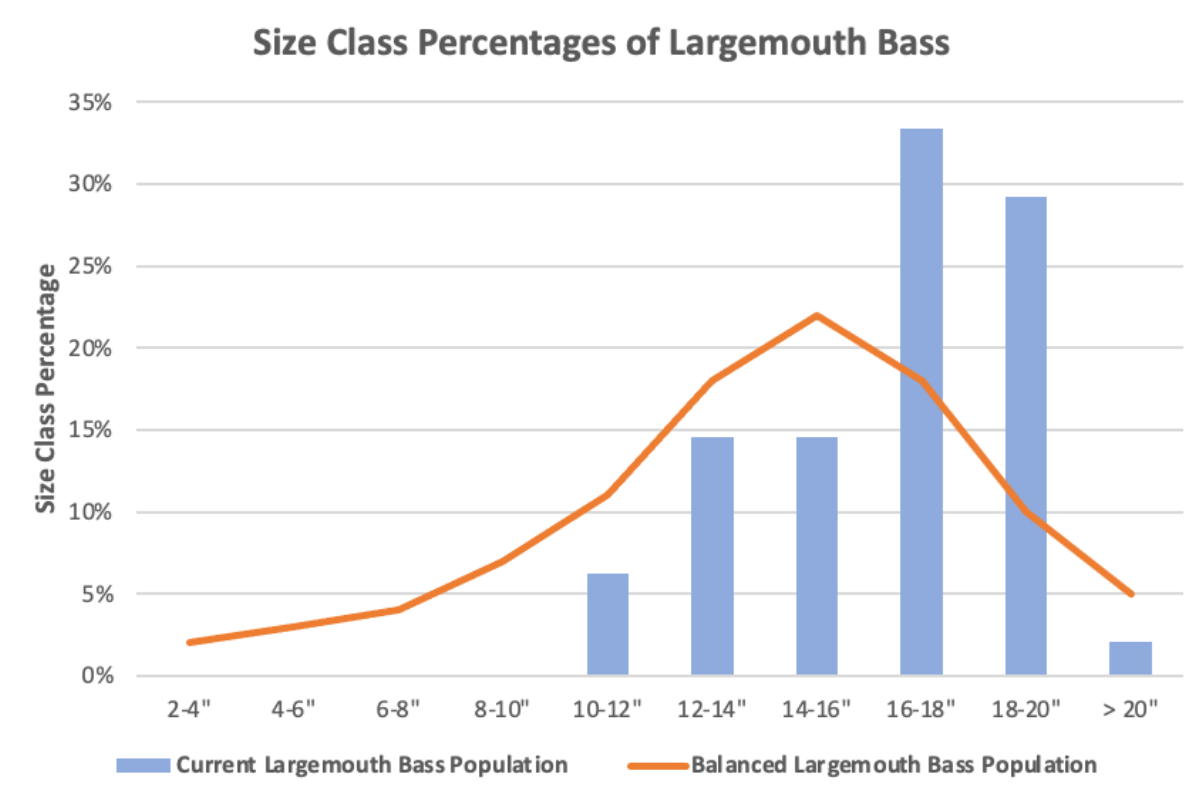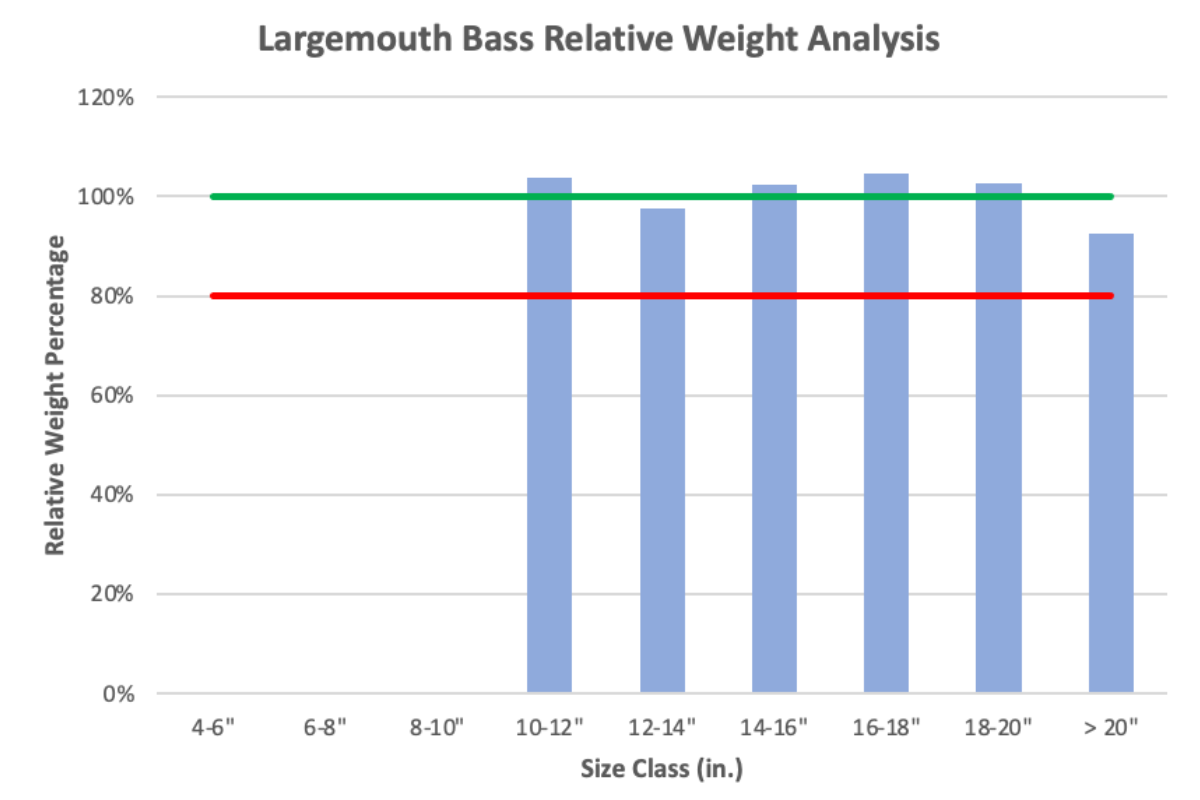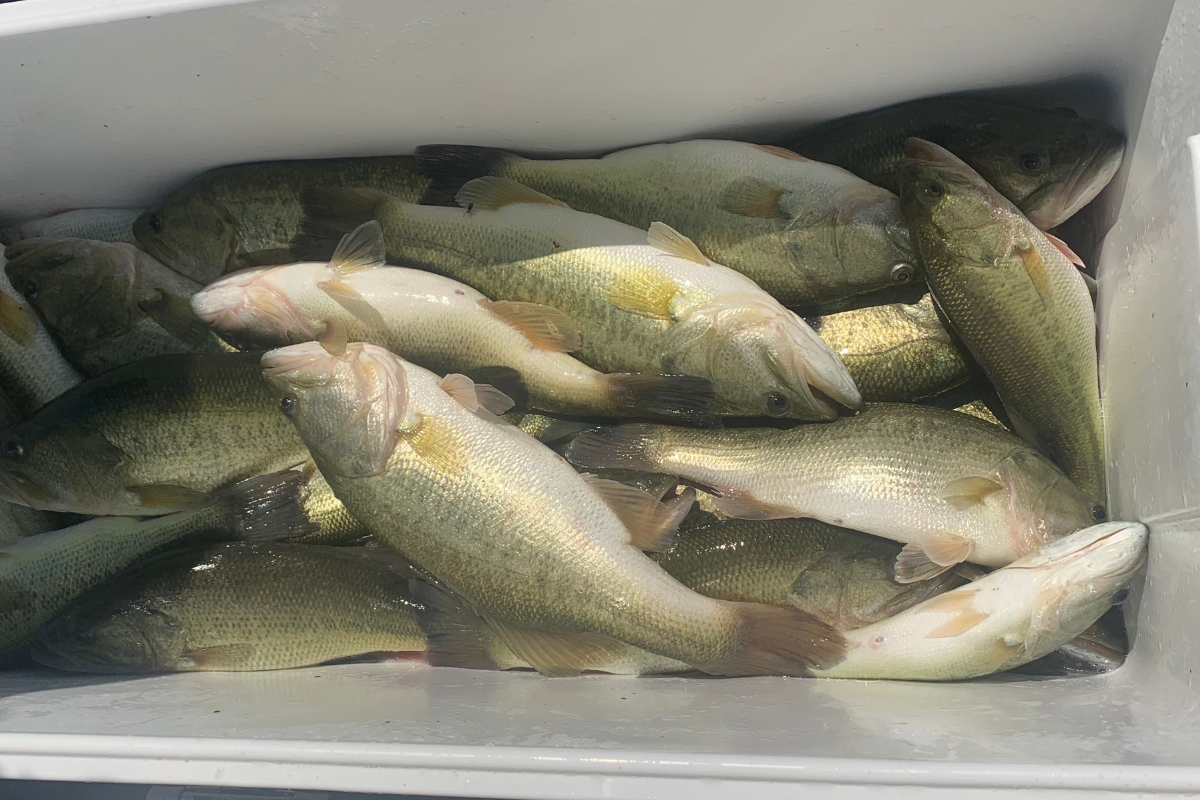Healthy, Big Bass — Too Much of a Good Thing?
When we perform an electrofishing population survey on a pond or lake, we’re primarily looking at two features of the fish populations — the distribution of sizes and the health of the fish for each size class. We analyze these features at the predator and prey levels to see if there are any deficiencies in the populations. We then develop recommendations to improve the population dynamics.
Having healthy fish is certainly a desire of every pond owner, but the distribution of fish in each size class is just as important — especially with big bass. We recently surveyed an 11.4 acre pond that had some of the healthiest, big bass we’ve seen. But there were too many of them, which was causing some serious issues with the distribution of fish in smaller size classes. Below we’ll show the data from this pond and talk about our management plans going forward.

How Many Big Bass Should You Have?
When performing a population survey, we calculate a metric called Catch Per Unit Effort (CPUE). This tells us how many fish we caught per hour and allows us to compare that to some baseline numbers that each pond should have. If we shock and net significantly more fish than those baseline values, the CPUE numbers are high and are usually a cause for concern. In this 11 acre pond, the largemouth bass CPUE was 230 per hour. It should be closer to 40 per hour.
This was the first red flag to signify that there might be some issues in this pond. Although we can’t develop final conclusions until we put all the data on a spreadsheet, we can usually tell if there are abnormal numbers of a certain species during sampling. Once measuring the fish and graphing the distribution of largemouth bass sizes (see figure above), we could see that the population was not in balance.
A balanced largemouth bass population should have a similar shape to the orange curve on the figure above. But this pond is certainly unbalanced. There are way too many big bass in the pond (especially in the 16-20″ size range) and hardly any small bass in the pond. We didn’t catch any bass in the 6-10″ size range, which is alarming.
Although the distribution of sizes needs some management, the health of the larger bass was quite impressive. The figure below shows the relative weight analysis for each size class of largemouth bass in this pond. As you can see, these big bass are quite healthy with many of them being larger than the standard weight for their length. We could tell that the fish were healthy during the electrofishing survey, but this data supports what we thought we were seeing.

Consequences of Too Many Big Bass
This presents an interesting problem that we don’t see very often in ponds and lakes around the north Florida and south Georgia area. Here we have a pond that has a population of extremely healthy, big bass. But the distribution is unbalanced which will inevitably create some issues with the bass population over the long term.
The overpopulation of the big bass is creating some obvious recruitment issues in this pond. Simply put, the abundant big bass are eating all the smaller bass. As a result, few bass were seen in the smaller size ranges. And although the big bass are exceptionally healthy, this is not a sustainable situation for this pond. Without new individuals growing into larger size classes, the bass population in the pond could eventually collapse.
In addition to causing issues for the smaller largemouth bass, the overabundant big bass population is also creating problems for the bluegill population in this pond. We noticed significant deficiencies in 4-6″ bluegill, which are prime food sources for largemouth bass. If the overpopulation of the big bass persists, the smaller bluegill will certainly be compromised as well.
How to Solve the Overabundance of Big Bass?
We rarely recommend removing largemouth bass that are healthy and over 90% relative weight, but it was absolutely necessary in this case. Without removal of some of these big bass, the stability of the predator and prey populations was at risk. As a result, we recommended harvesting 250 lbs of these big bass between 16-20″ in length. This will help to create a more balanced and sustainable population over time.
We also recommended stocking a significant amount of 3-4″ bluegills to assist with the lack of prey in this size class range. This will help to provide more prey for the larger bass so that they will hopefully not prey on themselves as much. The pond owner also mentioned that he was planning on stocking crawfish in the pond. We think this is a great idea as it will also lessen predation on the smaller bass. It should also lower the predation on the bluegills until that population can recover and become more balanced.


